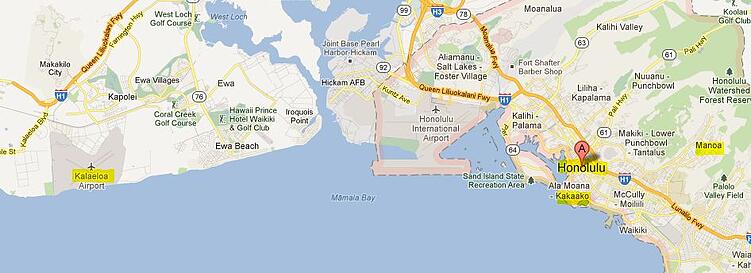The University of Hawaii Cancer Center has successfully renewed its National Cancer Institute (NCI) designation and is on schedule to open its new world-class cancer research and treatment facility near the John A. Burns School of Medicine (JABSOM) in the Kaka’ako district of Honolulu early next year. The Hawaiian biomedical research center is the only NCI-level facility in the Pacific Islands and one of only 66 NCI research organizations in the U.S. The island state may be a tropical paradise and vacation destination in the popular imagination, but there's no doubt that its capital city is also becoming a serious biomedical research magnet as well.
Around Honolulu there are now at least four life science research hubs: the main UH campus in Manoa; the Kaka'ako district; Downtown Honolulu (where the current Cancer Center facility is); and on the west side of Oahu, 25 miles away at Kalaeloa, home to the new UH West Oahu Campus and a planned 30,000sf NIAID-funded biosafety lab, the Pacific Health Research Laboratory (PHRL). Part of a national network of biosafety laboratories to protect the United States against biological threats, the Oahu PHRL would be tasked with developing rapid and more accurate diagnostic tests, drugs and vaccines for emerging and re-emerging infectious diseases. Officials hope to see it open as soon as 2016.
The UH West Oahu Campus will open next month, in August 2012, accepting its first class of students. While the UH expansion in Kalealoa will create educational opportunities, it will not create the additional biomedical labs that the University needs to fulfill state biosafety requirements. The Pacific Health Research Lab, however, will significantly increase UH's capacity to rapidly detect, respond to and/or prevent newly introduced infectious diseases. Biosafety Level 3 facilities (which is what PHRL would largely be) require a high level of security. That's why UH says the proposed location is ideal: it's within the Hawaii Army Reserve National Guard’s compound (which is responsible for responding to biological emergencies in the state) and near the new FBI headquarters for Hawaii.
The West Oahu Kalealoa district is on the other side of Pearl Harbor from Honolulu and was formerly home to the Barbers Point Naval Air Station. Given that the Hawaiian Islands are some of the most beautiful real estate in the U.S., it's not surprising that biomedical and other industrial expansion would look to former military space to build. As it happens, Honolulu has quite a bit of this real estate to repurpose, which bodes well for the development of other future biomed and biotech labs too.

Hawaii is particularly interested in infectious diseases because it is a tourist destination for visitors from both east and west, making it a too-easy transfer point for disease. In fact, a recent MIT study of airports and disease dissemination noted specifically that Honolulu has an "outsize danger" for spreading disease: Though its airport gets only a third the traffic of New York's Kennedy International, it is nearly as influential in terms of contagion because of its geography and tourism.
Of course, this East-West connection is also what makes Hawaii an excellent center for trans-Pacific collaboration and dialogue. As we mentioned in an earlier blog on UH, JABSOM has the most racially and culturally diverse class of medical students anywhere in the world. JABSOM opened the doors to its beautiful Kaka'alo teaching and research facility in 2005 along the newly-developed Kaka'alo Waterfront Park. The new Cancer Center facility, which broke ground in 2010, will be located next door to JABSOM and the labs of UH's Cell & Molecular Biology Graduate Program. In addition to its research labs, the Center will contain a large conference space on the ground floor.
Biotechnology Calendar, Inc. hosted its first annual Hawaii BioResearch Product Faire Front Line event on the JABSOM campus of the University of Hawaii, Manoa, last January. We look forward to returning to this spectacular venue again in 2013 to bring together Hawaiian life science researchers and laboratory equipment professionals to discuss the latest developments in lab technologies. With the Cancer Center due to open soon thereafter, this could be the ideal time to pin down orders to outfit these new labs, as well as to make valuable client connections generally in this up and coming market. For information on exhibiting, click here:


